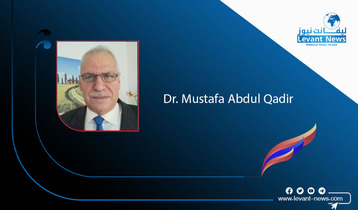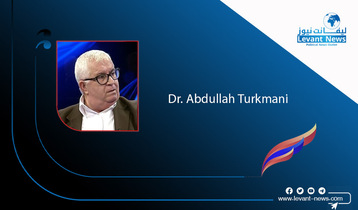-
Lockerbie: justice at last?

On December 21, 1988, Pan Am 103 took off from London’s Heathrow Airport en route for New York. When the Boeing 747 was cruising over the Scottish town of Lockerbie, a bomb in a suitcase exploded. Corpses and flaming debris rained down. All 259 passengers and crew died as well as 11 people on the ground. It was the worst act of terrorism in British history.
Exactly 32 years later justice may finally be getting closer. Last week the Wall Street Journal https://www.wsj.com/articles/u-s-expected-to-unseal-charges-against-new-suspect-in-1988-lockerbie-bombing-11608143709 reported that the US Justice Department is about to unseal a criminal complaint against Abu Agila Mohammad Masud, who is currently held by the Libyan authorities, and to seek his extradition for trial in a federal court.
Only one man has ever been convicted of involvement in the Lockerbie bombing - another Libyan called Abdel Basset al-Megrahi. Megrahi was sentenced by a Scottish court to life imprisonment in 2001 but was released in 2009 because of his terminal illness and was given a hero’s welcome on return to Tripoli, where he died in 2012. A second official, Lamin Khalifah Fhimah, was acquitted.
Lockerbie was the most infamous crime committed by Muammar Gaddafi’s regime but not the only one. Abdullah Senussi, his trusted enforcer, was convicted in absentia in France in 1999 for his role in the 1989 bombing of a UTA passenger plane over Niger, which killed 170 people.
Senussi is said to have recruited Megrahi when he was head of Libya's external security organisation. Gaddafi supplied arms to the IRA and to armed groups in the Middle East. In 1984 a gunman in the Libyan embassy opened fire on demonstrators in London, killing a policewoman. That led to a 20-year breach in relations with the UK.
President Ronald Reagan called Gaddafi “the mad dog of the Middle East.” In 1986, after Libyan agents detonated a bomb at a Berlin disco frequented by American soldiers, Reagan authorized air strikes on Tripoli and Benghazi. Gaddafi narrowly survived the bombing, which killed dozens. Some speculated later that Lockerbie was Gaddafi’s retaliation for this US action.
Still, when the indictments against Megrahi and Fhimah were announced in 1991 Gaddafi denied any involvement. He refused to hand them over until 1998, when he allowed them to stand trial at a special tribunal in the Netherlands. The testimony of one of the main prosecution witnesses was unreliable, and the case against the two accused was largely circumstantial.
The UN Security Council imposed sanctions on Libya over Lockerbie in 1992. It only lifted them in 2003 after Gaddafi agreed to pay $2.3 billion in compensation to the families of the victims. The country’s foreign minister said it accepted civil responsibility for the attack.
Last week, however, was not the first time Masud’s name has appeared. He was identified In a remarkable film made by Ken Dornstein, whose younger brother David was amongst the Pan Am victims. Dornstein was unable to visit Libya because of the sensitivity of the issue. In September 2011, however, after the start of the Arab Spring and Nato air strikes, he was free to travel. Not only did he meet Megrahi but he also heard, from a declassified CIA cable, about suspicions against Masud, a “technical expert” who travelled with Megrahi to Malta shortly before the bombing. Scottish investigators had also come across the name. But in 1999, when some were permitted to enter Libya and question ministers, they refused to confirm or deny that Masud existed.
Dornstein was determined to find out the truth. He came across a video clip from 2009, when Megrahi returned home to be greeted by colleagues, including Senussi and Masud. Megrahi always maintained that he had no involvement in the bombing of Flight 103, but ”here he was, embracing some of the other prime suspects,” according to an article in the New Yorker in 2015. https://www.newyorker.com/magazine/2015/09/28/the-avenger
In the wake of the anti-Gaddafi uprising, Masud was accused of using explosive devices to booby-trap the cars of opposition supporters and was sentenced to 10 years in prison.
This whole saga is a grim reminder of the repression – both domestic and foreign– of the Gaddafi era, including the Abu Salim massacre in 1996, in which 1,200 prisoners were killed.
Some Libyans and foreigners still believe their country was falsely accused. Initially, suspicion fell on a Palestinian group that operated out of Syria and was backed by Iran. It was deemed to have carried out the attack in retaliation for the downing of an Iranian passenger aircraft by a US warship earlier in 1988. The UK authorities have always believed Libya was responsible. News that the US is about charge a second Libyan, and someone whose name was mentioned in the original investigation, bolsters that view.
Libya of course has been in chaos since Gaddafi was killed by rebels in October 2011. War has raged between the UN-backed government in Tripoli and General Khalifa Haftar and his forces. No end is in sight for the country’s long-suffering people. But it may be so for one of the most heinous crimes of Gaddafi’s long and unhappy rule.
BY: IAN BLACK
You May Also Like
Popular Posts
Caricature
BENEFIT Sponsors BuildHer...
- April 23, 2025
BENEFIT, the Kingdom’s innovator and leading company in Fintech and electronic financial transactions service, has sponsored the BuildHer CityHack 2025 Hackathon, a two-day event spearheaded by the College of Engineering and Technology at the Royal University for Women (RUW).
Aimed at secondary school students, the event brought together a distinguished group of academic professionals and technology experts to mentor and inspire young participants.
More than 100 high school students from across the Kingdom of Bahrain took part in the hackathon, which featured an intensive programme of training workshops and hands-on sessions. These activities were tailored to enhance participants’ critical thinking, collaborative problem-solving, and team-building capabilities, while also encouraging the development of practical and sustainable solutions to contemporary challenges using modern technological tools.
BENEFIT’s Chief Executive Mr. Abdulwahed AlJanahi, commented: “Our support for this educational hackathon reflects our long-term strategic vision to nurture the talents of emerging national youth and empower the next generation of accomplished female leaders in technology. By fostering creativity and innovation, we aim to contribute meaningfully to Bahrain’s comprehensive development goals and align with the aspirations outlined in the Kingdom’s Vision 2030—an ambition in which BENEFIT plays a central role.”
Professor Riyadh Yousif Hamzah, President of the Royal University for Women, commented: “This initiative reflects our commitment to advancing women in STEM fields. We're cultivating a generation of creative, solution-driven female leaders who will drive national development. Our partnership with BENEFIT exemplifies the powerful synergy between academia and private sector in supporting educational innovation.”
Hanan Abdulla Hasan, Senior Manager, PR & Communication at BENEFIT, said: “We are honoured to collaborate with RUW in supporting this remarkable technology-focused event. It highlights our commitment to social responsibility, and our ongoing efforts to enhance the digital and innovation capabilities of young Bahraini women and foster their ability to harness technological tools in the service of a smarter, more sustainable future.”
For his part, Dr. Humam ElAgha, Acting Dean of the College of Engineering and Technology at the University, said: “BuildHer CityHack 2025 embodies our hands-on approach to education. By tackling real-world problems through creative thinking and sustainable solutions, we're preparing women to thrive in the knowledge economy – a cornerstone of the University's vision.”
opinion
Report
ads
Newsletter
Subscribe to our mailing list to get the new updates!






















